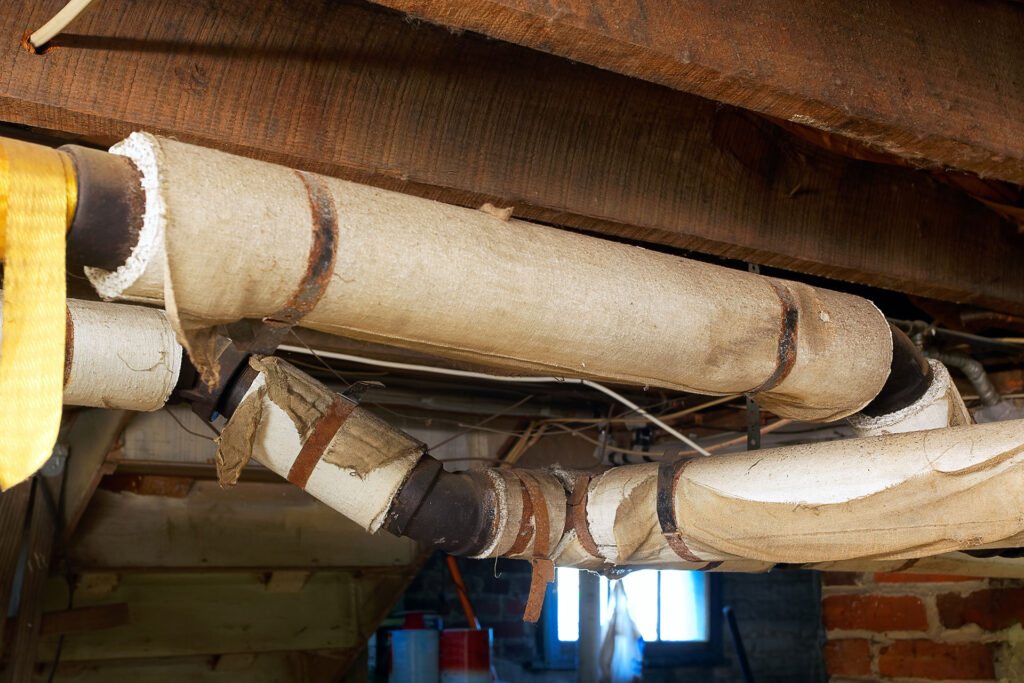If you know you are the victim of asbestos exposure, you are probably feeling uneasy, and for good reason. There is a chance that you may eventually develop a serious and life-threatening disease, such as mesothelioma. Unfortunately, you are likely in a waiting game because there is little you can do to control whether you will eventually get sick. There is a chance that you may never develop an illness, but few factors can predict your eventual health outcome. If you are dealing with sickness due to asbestos exposure, you should contact a mesothelioma lawyer to determine how you can seek financial compensation for your injury.
There Is No One Set Amount of Asbestos Exposure That Will Make You Ill
It is impossible to determine a certain amount of exposure to asbestos that causes mesothelioma because the facts and circumstances are different for each person. Some people were around the carcinogenic substance for years and breathed in a heavy amount of asbestos, yet they never developed mesothelioma. Others who were around a lesser amount of asbestos or for a shorter period will develop mesothelioma. Still, for some, even a one-time exposure to asbestos can result in this sickness. If a doctor has diagnosed you with mesothelioma, it is likely the result of asbestos exposure, as there are very few other known causes.
There is no apparent threshold of asbestos exposure that results in disease. The only sure thing is that asbestos has carcinogenic properties, and it can result in certain types of cancers. Roughly 8-13 percent of people who are the victims of asbestos exposure will have mesothelioma at some point in their lives. It generally takes between 20 to 60 years for one to develop mesothelioma because the asbestos remains latent in the body, causing scarring and inflammation that can eventually lead to cancer.
Factors That May Determine Whether You Develop Mesothelioma
There is no degree of safe asbestos exposure; the higher the amount and the more you inhale, the higher your chances of developing mesothelioma. Further, numerous factors can determine whether you fall ill with mesothelioma and how long it may take. These factors include:
- The duration of time for which you experienced asbestos exposure
- The concentration of asbestos fibers in various parts of your body
- Whether you have affected your lungs in other ways, such as smoking
- Whether you are genetically predisposed to certain types of illnesses
- The types of asbestos fibers (for example, if you breathe in longer asbestos fibers, it heightens the risk of mesothelioma, and you may develop the disease more quickly)
Asbestos Has a Long Latency Period in Your Body
There are some cases where people who are victims of asbestos exposure have developed illnesses more quickly than others. For example, some rescue workers who were present at Ground Zero have already developed lung diseases because of their exposure to asbestos at the site. One first responder died of mesothelioma only 18 years after 9/11, and medical professionals linked his mesothelioma to asbestos exposure at Ground Zero. Other first responders may begin to soon show symptoms due to the heavy concentration of asbestos that was present at the site.
While everything varies depending on your facts and circumstances, one certainty is that asbestos has a lengthy latency period. You will likely not know that you are reaching a point where you are becoming critically ill until your symptoms worsen. Your body is possibly in the process of developing a severe disease, yet you are entirely unaware of it.
You cannot receive money for asbestos exposure alone. To get financial compensation, you must develop an actual medical condition that resulted from your asbestos exposure. At that point, you can file a claim because the prerequisite is that you have suffered an injury.
What to Do if You Develop Mesothelioma
If a doctor diagnoses you or a loved one with mesothelioma, one of the first things that you should do is seek legal help. Even though you or your family member is dealing with a serious health threat, you still need to begin the legal process. You have a limited time to take legal action after you learn that asbestos exposure caused your illness.
You can begin the legal process by contacting a mesothelioma attorney. They will review your case and help you determine where the asbestos exposure occurred. Your mesothelioma lawyer will explain how you can seek compensation for your injury, and the route that you pursue depends on whether the potential defendant is still around and financially healthy or has already lost their money. Some companies with significant asbestos liability declared bankruptcy and had to establish a trust fund to pay claims. Then, you will file a claim against the trust fund. In other cases, companies have not had to declare bankruptcy. In that event, you can file a lawsuit against the company, resulting in the payment of your full damages.
Hire a Mesothelioma Lawyer
A mesothelioma lawyer can help you in many ways. Most importantly, they will handle all the details of your case with a complete understanding of your health condition. Your mesothelioma attorney will make it easy to get legal help because it will not cost you anything out of your pocket. They will work for you on a contingency basis, meaning they only get paid when you receive money for your asbestos injuries. Then, your attorney will receive an agreed-on percentage of your settlement or jury award. If you do not win, you do not pay.
A mesothelioma lawyer can also provide you with peace of mind. Dealing with the physical and emotional toll of asbestos-related diseases is overwhelming enough. Having a skilled attorney by your side can alleviate the legal burdens, allowing you to focus on your health and well-being.
Asbestos exposure can lead to severe health conditions such as mesothelioma, lung cancer, and asbestosis. These diseases often have long latency periods, and symptoms may not manifest until years or decades later. By seeking legal representation, you proactively safeguard your future and hold responsible parties accountable.



